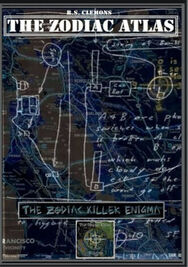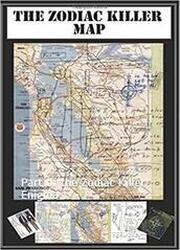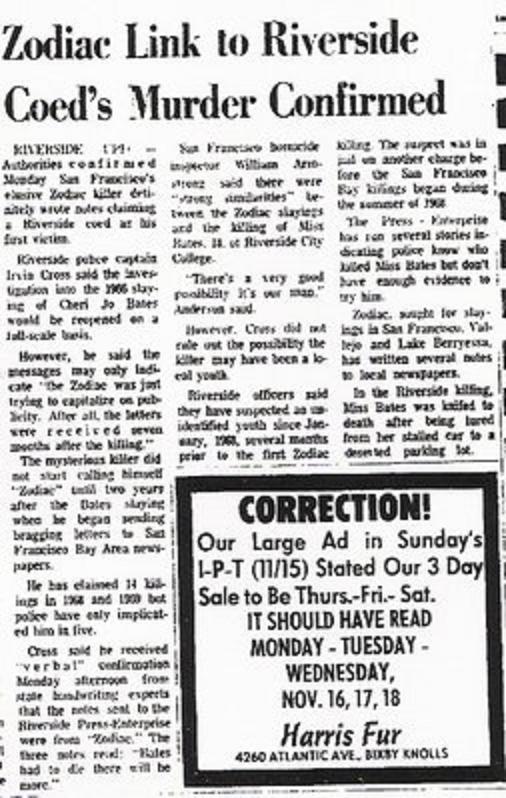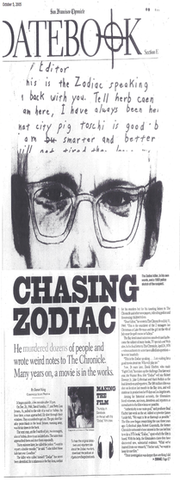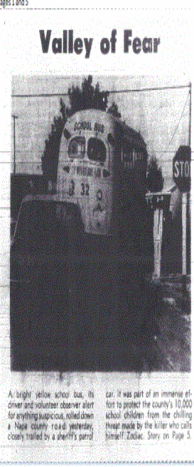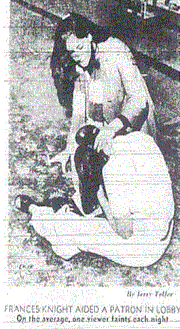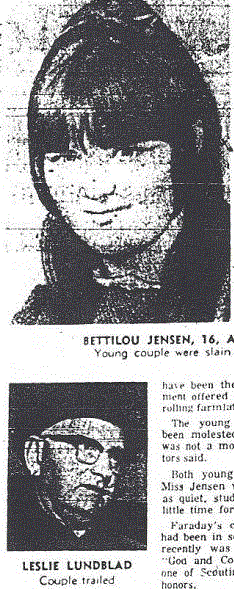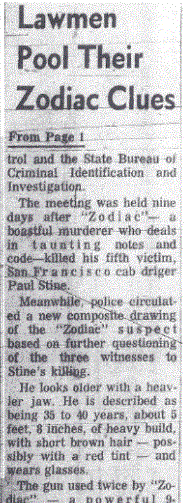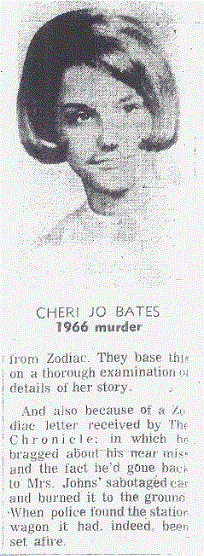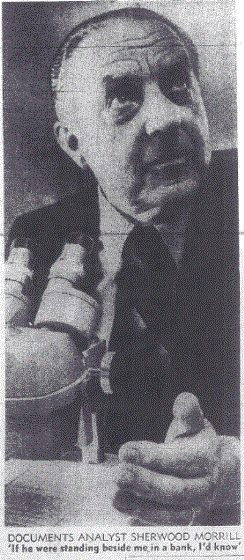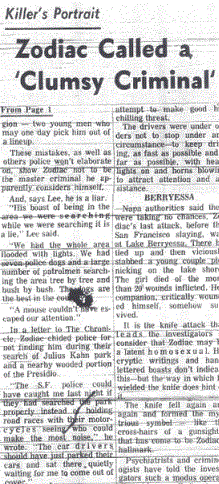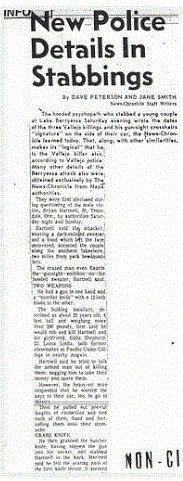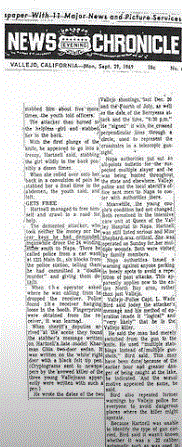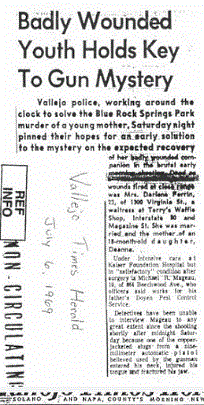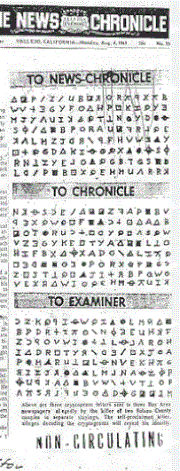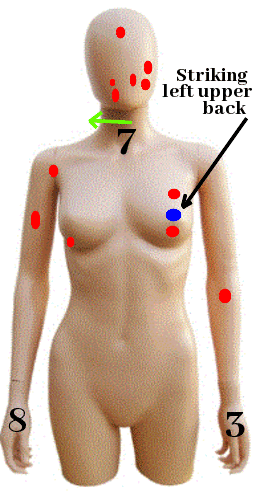
The lacerations and their directions have a story to tell - one that doesn't indicate an overhand knife attack from the front in a downwards motion or an underhand grip from the front in a straight, or upwards motion - an argument strengthened somewhat by the evident lack of injuries to the area of the abdomen. The 'Confession' letter stated "I said it was about time for her to die. I grabbed her round the neck with my hand over her mouth and my other hand with a small knife at her throat". The killer was effectively gaining control from the beginning of the attack rather than performing an uncontrolled full frontal assault, stabbing wildly. If we base this analysis on one assailant as the letter implies, it is reasonable to deduce the assailant had grabbed Cheri Jo Bates around the neck and mouth with his left arm in a form of choke-hold.
Cheri Jo Bates' autopsy findings showed numerous petechiae in the forehead (broken capillary blood vessels). Petechiae are commonly present in the eyes or eyelids as a result of manual compression of the neck area, but not always, and can also be present on the face, especially the forehead. The manual force compressing the neck increases the vascular pressure causing the blood vessels to rupture. The assailant can now use his right hand to stab and slash the young girl, in effect, reaching over her right shoulder and directing the knife back towards himself (possibly an underhand grip), causing the three injuries to her breast region and several to her face. Clearly, at this point, Cheri Jo Bates is using her hands and arms in a defensive motion to protect her upper torso and face (eleven injuries noted to her hands and fingers, including lacerations and abrasions), as noted in the diagram. The small knife is being deflected as it's delivered, resulting in lacerations running laterally across her body. There must have been a violent struggle at this point with Cheri Jo Bates trying desperately to secure her release, and the attacker resisting her escape, resulting in the alleyway floor being disturbed by their footwear as described in the 'Inside Detective' magazine by law enforcement: "The driveway adjacent to 3680 Terracina Street was so churned up it looked like a tractor had been over the ground. The girl, who was very athletic, put up a terrific struggle".
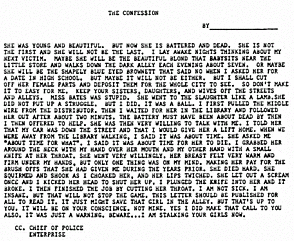 Click to enlarge
Click to enlarge One must also note the correlation between the wounds inflicted to her breasts, his reference in the letter to "her breast felt very warm and firm" and his promise to "cut off her female parts and deposit them for the whole city to see". In addition, if her breast felt very warm, was this indicative of an assailant who was not wearing gloves and who had earlier deposited fingerprints on her lime green Volkswagen Beetle. The 'Confession' letter then stated: "She let out a scream once and I kicked her in the head to shut her up". If this were true, then clearly, he cannot kick her in the head standing upright behind her, while she is upright too. Bearing in mind the position she was found in the alleyway the following day - face down - she may likely have been thrust forward at this point, onto the alleyway floor, thus causing abrasions to her hands (noted at autopsy). Free from the choke-hold she is able to let out a scream, which resulted in the assailant kicking her in the face. Whether this action ever took place is debatable - but here are three excerpts from the autopsy to consider: [1] "A 2 cm oblique ragged edge gaping laceration of the upper lip on the left side that angles laterally from above and extends completely through the thickness of the lip. The teeth behind are not loose or broken". [2] "A dark blue-gray, slightly swollen discoloration of mainly the mucocutaneous portions of the upper and lower lips on the right side involving a 2 cm greatest diameter". [3] "An area of dark blue-gray discoloration of the skin of the left cheek angling from above in front slightly downward and posteriorly. The overall length is 3 cm".
None of the injuries thus far, despite being extensive, are necessarily terminal at this juncture. With Cheri Jo Bates having been forced, face-down into the alleyway floor, the 'Confession' letter kicks in again: "I plunged the knife into her and it broke". The assailant likely atop and astride the young woman, plunges the knife into her left upper back (shown in blue in the diagram above). The back region being very firm, coupled with an extensive attack using a small pocket knife, may well have caused the hinge mechanism to fail, resulting in the blade closing and quite possibly injuring the hand or fingers of the assailant. The History Channel documentary 'The Hunt for the Zodiac Killer' alluded to the fact the killer's blood may have dripped onto the attire of Cheri Jo Bates. This is a very real possibility and likely resulted in the end of the attack on the young woman - but for the final coup de grace: "I finished the job by cutting her throat".
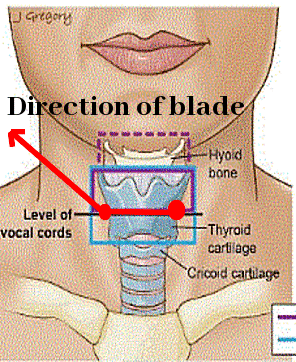
However, she could before this happened, have reached back with her right hand and grabbed the hair of her attacker. The autopsy stated "Considerable partially dried blood over the hand and especially about the fingers and under the unpainted moderately long but not carefully manicured fingernails". When Cheri Jo Bates grabbed her assailant's hair, the extensive blood on her dominant hand trapped the hair at the base of her right thumb, resulting in crucial evidence that would later be used to extract mitochondrial DNA from her murderer.
There is one more important thing to consider, other than finding foreign DNA on the clothes of Cheri Jo Bates - and that is blood typing. In the 'Inside Detective' magazine it stated "At the murder scene, drops of blood leading from the body to Terracina Street indicated to the detectives, that the murderer had walked back to the street following the slaying".
This may have been the blood of the victim dripping from the knife or assailant. But, there surely must have been consideration from investigators that this may have been blood from the murderer's cut right hand, which is common during attacks with bladed instruments. This blood was either collected and stored, or completely disregarded as originating from the victim, which could have been a big mistake.
Cheri Jo Bates' blood type detailed at autopsy is rare in the USA population. It was AB RhD positive, which accounts for only 3.4% of the American population. Even with the limited forensic capabilities in 1966, this testing was a simple affair, and could have determined whether the blood trail extending towards Terracina Drive was that of the killer's, and subsequently stored appropriately for future testing. Different samples could also have been retrieved from the clothing of Cheri Jo Bates and stored separately. What are the chances the killer also possessed this very rare blood group? Whether or not this trail of blood was tested and stored in controlled conditions, and ruled out, we may never know. But if it wasn't, then this story could possibly have had a very different ending from the one it's likely to have.




 RSS Feed
RSS Feed



